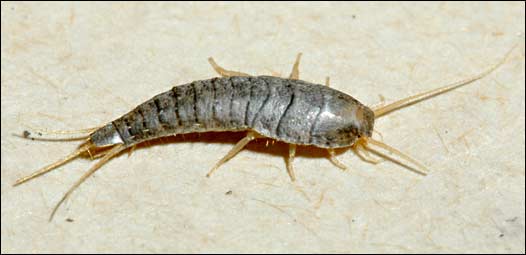
Figure 1 . Courtesy of University of Minnesota Extension
Silverfish, or Fishmoths
Order: Thysanura
Similar Pests: Thermobia
domestica
Identification/Description: “flattened, slender, scale-covered bodies that are sometimes silvery, usually with a metallic sheen. The body tapers gradually to the rear, giving the insect a fishlike appearance, suggesting the common names ‘silverfish’ or ‘fishmoths’ or the German Fischen. They have long, slender antennae and 3 long, slender appendages at the rear of the body, suggesting another common name—‘bristletails,’ ” according to UCR’s Ebeling. “A full grown silverfish or firebrat is about ¼-½ inch long. Both insects lack wings and have carrot-shaped bodies, thick at the front and tapering towards the posterior. The young look identical to the adults, but are smaller. Silverfish and firebrats have two long antennae on their heads and three tail-like appendages on the tips of their abdomens. The five appendages are approximately as long as the body. Silverfish have uniformly colored silver bodies while firebrats have mottled gray-brown colored bodies. Both insects can move very fast when disturbed and homeowners often mistake them for cockroaches,” according to UMN Extension.
Length: Full-grown at ¼ to ½ inch long, according to UMN Extension. “It attains a length of about 12 mm, not including the appendages,” according to UCR’s Ebeling.
Immature Stages: “The eggs are elliptical, and are only about 1 mm long. They hatch in from 2 weeks to 2 months or more, depending on conditions,” according to UCR’s Ebeling.
Wing Spread: No wings.
Life Cycle: Under favorable conditions only “3 to 4 months, leading to a rapid build-up in numbers,” according to “Crawling Insect Pests.” “According to Sweetman (1939), females might lay 1 to 3 eggs per day on a number of successive days or at intervals of several days or even weeks. Wigglesworth (1964) stated that the female alternately molted and laid eggs, and might molt up to 50 times before becoming an adult. He found that the eggs hatched in 50% relative humidity at 22 and 27 °C (71 and 80 °F), but only above 75% RH at 29 and 32 °C (84 and 90 °F). He noted that the period from egg to adult could be as long as 2 or 3 years or, under favorable conditions, only 3 or 4 months. Development was favored by warmth and high humidity. Sweetman also observed that at temperatures ranging from 22 to 32 °C (71 to 90 °F), nearly all reproduction occurred at above 75% RH, and the highest percentage of oviposition took place at 84 to 100% RH. This insect may continue to grow for well over 3 years, molting every 2 or 3 weeks,” according to UCR’s Ebeling.
Food: Chewing insects. “Silverfish eat a wide variety of foods, including glue, wallpaper paste, book bindings, paper, photographs, starch in clothing, cotton, linen, rayon fabrics, wheat flour, cereals, dried meats, leather and even dead insects,” according to “Crawling Insect Pests.” “Silverfish feed on any human food, and in addition they may feed on starch, paste, glue (as in book bindings), starched cotton, linen, silk or certain synthetic fibers and paper products (figure 205), to which they are attracted by sizing or, as in the case of wallpaper, by paste, according to UCR’s Ebeling. According to Penn State, “Although most people think that bristletails feed on book bindings and carbohydrates, they actually prefer dried beef, beef extract, dead insects, and other items high in protein.”
Habitat: “damp, cool places.” “Can survive long periods, sometimes over a year, without food but are sensitive to moisture and require a high humidity (75% to 90%) to survive. They also have a temperature preference between 70 and 80 degrees F,” according to TAMU. According to Penn State, “They can survive for weeks without food and water, and more than 300 days if water is available.”
Behavior: nocturnal, hiding during the day. “Elaborate courtship” according to Kaufman; otherwise “little is known about bristletail behavior,” according to Penn State. Destructive evidence in archives and libraries abounds:
Figure 2. Book Damage, Courtesy of Wikipedia
Control: Involves a variety of factors—1) good sanitation—clean and
vacuum regularly, 2) dehumidification (i.e., reduce water sources), 3) habitat
modification (e.g., reduce food sources, reduce harborages, and use sealed
plastic containers), and 4) poisonous insecticides. According to TAMU’s Wizzie Brown and John A.
Jackman, “Natural active ingredients include d-limonene, clove oil, thyme
oil, boric acid or diatomaceous earth. Synthetic
active ingredients are items such as bifenthrin, lambda-cyhalothrin, cypermethrin,
permethrin or deltamethrin.” Historically, the Ming and Ching dynasty pioneered
the addition of Pb3O4—red lead—to prevent silverfish attacks on paper (see
Library Journal 103, July 1978: p. 1337).
Citations: Hogue, Insects of the Los Angeles Basin, p. 51-52ff, Kaufman, Field Guide to Insects of North America, p. 28 and see cover pages for web resources.
Updated: 5 February 2010.